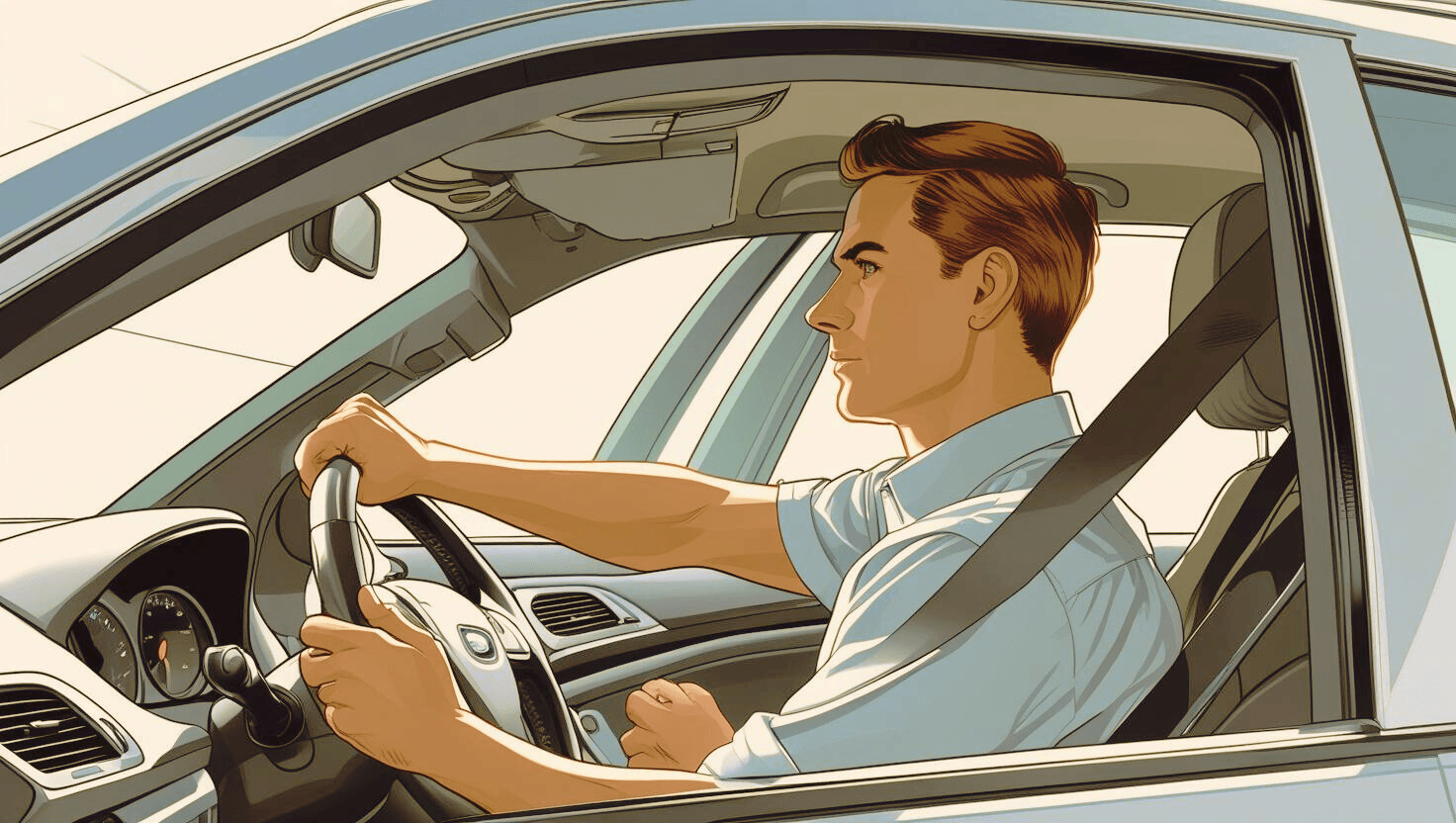Shoulder Checks for Your G2 and G Road Tests
Everything You Need to Know
Preparing for your driving test can feel overwhelming, especially when mastering essential skills like shoulder checks. Whether taking your G1 test, G2 road test, or preparing for the full G road test, knowing when and how to perform shoulder checks is essential to passing and becoming a safe driver.
This article covers everything you need to know about shoulder checks for your G2 and G road tests. It explains a shoulder check, why it matters, how to perform it properly, and common mistakes to avoid during your driving test.

What Is a Shoulder Check?
A shoulder check, sometimes called a blind spot check, is when you quickly glance over your shoulder to look at areas not visible in your mirrors. This action helps you spot vehicles, cyclists, or pedestrians that may be in your blind spot before you change lanes, merge, or make turns.
Shoulder checks are required by the Ministry of Transportation for Ontario and form a key part of both the G2 road test and the G road test. The G1 test primarily assesses basic rules and knowledge, while the G2 and G road tests put your actual driving skills under scrutiny, including shoulder checks.
Why Are Shoulder Checks Important for Your Driving Test?
Your driving test examiner wants to see that you can drive safely and responsibly in real-world traffic conditions. Properly performed shoulder checks show your awareness of your surroundings and help prevent accidents caused by unseen vehicles or hazards.
Failing to do shoulder checks during your G2 or G road tests is a common reason candidates fail. Examiners look for smooth, timely, and frequent checks to ensure you do not rely solely on mirrors when changing lanes or merging.
Even after passing your G2 test, shoulder checks remain critical for safe driving. Developing good habits early prepares you for the more advanced G road test and everyday driving.
If you want to learn more about preparing for the G2 road test, check out our detailed G Road Test Preparation Guide.
How to Perform a Proper Shoulder Check
Doing a proper shoulder check is simple but requires practice to make it quick and effective. Here is a step-by-step guide:
- Use your mirrors first: Before moving your head, check your rearview and side mirrors to see what is happening behind and beside you.
- Turn your head smoothly: Quickly turn your head to look over your shoulder in the direction you plan to move.
- Look for vehicles or hazards in the blind spot: Your blind spot is the area that mirrors cannot cover. Check carefully for motorcycles, bicycles, or smaller vehicles.
- Return your head to facing forward: After the check, immediately bring your head back to the front to maintain control and focus on the road ahead.
- Use signals: Always signal your intention to change lanes or turn before or while doing the shoulder check.
This technique will often help you pass your driving test and build safe driving habits. If you want to improve your overall driving skills, you can also read our article on how to prepare for the G1 test effectively.
Common Mistakes to Avoid During Shoulder Checks on Your Driving Test
Many learners fail their G2 or G road tests due to improper shoulder checks. Avoid these errors:
- Not doing shoulder checks: Skipping this step is an automatic fail on many parts of the driving test.
- Turning your whole body instead of just your head: Keep your body facing forward; only turn your head to check.
- Taking too long or over-checking: Shoulder checks should be glances, not long stares.
- Not signaling before the shoulder check: The examiner wants clear communication with other road users.
- Checking the wrong direction: Make sure you check the blind spot in the direction you want to move.
- Relying only on mirrors: Mirrors do not cover all areas, so a shoulder check is always necessary.
Real-Life Example: Why Shoulder Checks Matter
A report from the National Highway Traffic Safety Administration (NHTSA) highlights that more than 800,000 vehicles change lanes daily on US roads, and nearly 300,000 lane-change crashes occur each year. Many of these accidents happen because drivers fail to check their blind spots properly.
Performing shoulder checks reduces the risk of collisions by helping drivers identify vehicles, cyclists, or pedestrians that mirrors do not reveal. This makes shoulder checks a crucial safety habit for passing your G2 and G road tests and avoiding real-world accidents on busy roads.
Tips to Practice Shoulder Checks for Your G2 and G Road Tests
- Practice regularly in low-traffic areas: Start practicing shoulder checks in empty parking lots or quiet streets.
- Ask for feedback: Have an experienced driver watch and correct your technique.
- Use driving lessons: Professional instructors focus on shoulder checks during your lessons.
- Combine shoulder checks with signaling: Practice signaling and shoulder checks together so they become automatic.
- Stay calm during your test: Anxiety can make you forget steps. Take a deep breath and focus on your routine.
Final Thoughts
Mastering shoulder checks is key to passing your G2 and G road tests. These checks demonstrate your awareness and responsibility as a driver. Make sure to practice often, avoid common mistakes, and always use shoulder checks before lane changes, merges, and turns.
Passing your driving test starts with showing you can handle all aspects of driving safely, and shoulder checks are a big part. Whether you are preparing for your G1 test or are ready for the G2 or full G road test, shoulder checks will remain essential for your success.
Ready to take the next step toward getting your full license? Start practicing your driving skills today and confidently book your official road test. Visit our Complete Driving Test Resources page for tips, guides, and practice materials to help you succeed on your G2 and G road tests.
